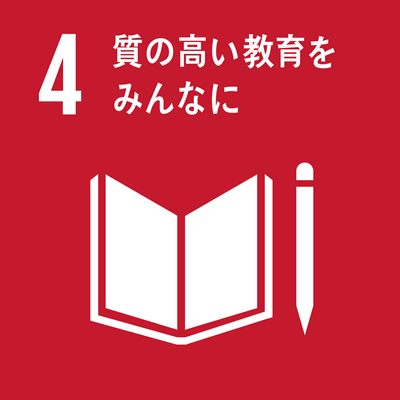シラバス表示
シラバスの詳細な内容を表示します。
→ 閉じる(シラバスの一覧にもどる)
科目の基本情報
| 開講年度 | 2024 年度 | |
|---|---|---|
| 開講区分 | 工学部自由科目 | |
| 受講対象学生 |
学部(学士課程) : 4年次 電気電子工学コース4年次クロス科目のため、学部修士一貫コースの学生のみ受講可能です。 |
|
| 選択・必修 | ||
| 授業科目名 | オプトエレクトロニクス特論 | |
| おぷとえれくとろにくすとくろん | ||
| Optoelectronics | ||
| 単位数 | 2 単位 | |
| ナンバリングコード | ||
| 開放科目 | 非開放科目 | |
| 開講学期 |
前期 |
|
| 開講時間 |
水曜日 1, 2時限 |
|
| 授業形態 |
対面授業 * 状況により変更される可能性があるので定期的に確認して下さい
「オンライン授業」・・・オンライン会議ツール等を利用して実施する同時双方向型の授業 |
|
| 開講場所 | 11番教室 | |
| 担当教員 | 元垣内敦司(工学研究科電気電子工学専攻) | |
| MOTOGAITO, Atsushi | ||
| SDGsの目標 |
|
|
| 連絡事項 | * 状況により変更される可能性があるので定期的に確認して下さい |
|
学修の目的と方法
| 授業の概要 | 今日の情報化社会において,情報処理技術及び通信工学は工学の根幹をなすものである。この分野で光を用いた技術(オプトエレクトロニクス)がますます重要になっている。一方で、プラズモニクスやメタマテリアルは20世紀から21世紀初めにかけて萌芽した比較的新しい技術分野であるが、従来にない特徴や性質を生かした様々な応用が見込まれる。本講義ではプラズモニクスやメタマテリアルに焦点を当て、これらを理解するために必要となる光学の概念を学ぶと共に応用についても講義を行う。 (Course description/outline) In today's information society, information processing technology and communication engineering are at the core of engineering. In this field, technology using light (optoelectronics) is becoming increasingly important. On the other hand, plasmonics and metamaterials are a relatively new technical field that sprouted from the 20th century to the early 21st century, but are expected to have various applications that make use of unprecedented features and properties. In this lecture, we focus on plasmonics and metamaterials, learn the concepts of optics necessary to understand plasmonics and metamaterials, and give lectures on applications. |
|---|---|
| 学修の目的 | この授業では、波動光学や結晶光学などの基礎を学びながら、プラズモニクスやメタマテリアルの性質や応用に関する知識を得ることを目的として講義を行う。 (Learning objectives) In this class, lectures will be given with the aim of gaining knowledge on the basics and applications of plasmonics and metamaterials while learning the fundamentals of wave optics and crystal optics. |
| 学修の到達目標 | 波動光学及び結晶光学に関する基礎やプラズモニクスとメタマテリアルの基礎及び応用関して理解できること。 (Achievements) Understand the fundamentals of wave optics and crystal optics, and the basics and applications of plasmonics and metamaterials. |
| ディプロマ・ポリシー |
|
| 成績評価方法と基準 | レポート100%。ただし8割以上の出席を必要とする。 (Grading policies and criteria) Report 100%. However, attendance of 80% or more is required. |
| 授業の方法 | 講義 |
| 授業の特徴 |
その他、能動的要素を加えた授業(ミニッツペーパー、シャトルカードなど) |
| 授業アンケート結果を受けての改善点 | 波動光学及び結晶光学に関する基礎やプラズモニクスやメタマテリアルの基礎及び応用に関して、学生自らが理解できるようにするために、講義を行うだけでなく適宜演習を行う。 (Ideas for improving classes) In order to enable students to understand the fundamentals of wave optics and crystal optics, and the basics and applications of plasmonics and metamaterials, they will not only give lectures, but will also conduct exercises as appropriate. |
| 教科書 | 大津元一・田所利康著 先端技術シリーズ1 光学入門(朝倉書店) 斎木敏治・戸田泰則著 先端技術シリーズ2 光物性入門(朝倉書店) 岡本孝之・梶川浩太郎著 プラズモニクス 基礎と応用(講談社)からの抜粋 (Textbooks) M. Ohtsu and T. Tadokoro : Introduction to Optics (Asakura Shoten) T. Saiki and Y. Toda: Introduction to Opticsl Properties (Asakura Shoten) T. Okamoto and K. Kajikawa: Plasmonics -From basic to Application- (Kodansha) |
| 参考書 | 谷田貝豊彦著 光社)学(朝倉書店) 堀越智編著・萩行正憲・田中拓男・高野恵介・上田哲也著 図解メタマテリアル 常識を超えた次世代材料(日刊工業新聞社) 木村達也訳 光メタマテリアルの基礎(丸善出版) Max Born and Emil Wolf, Principle of Optics 7th edition (CAMBRIDGE UNIVERSITY PRESS) 草川徹訳 光学の原理 第7版 Ⅰ,Ⅱ,Ⅲ(東海大学出版会) 福井萬壽夫・大津元一著 光ナノテクノロジーの基礎(オーム社) 左貝潤一著 メタマテリアルのための光学入門(森北出版) 佐藤勝昭著 光と磁気(改訂版)(朝倉書店) 梶川浩太郎、岡本隆之 Pythonを使った光電磁場解析(コロナ社) (Reference materials) Max Born and Emil Wolf, Principle of Optics 7th edition (CAMBRIDGE UNIVERSITY PRESS) |
| オフィスアワー | オフィスアワー:毎週水曜日16:30~18:00 教員室:電子情報棟1階1116室 連絡方法:電子メールmotogaito@elec.mie-u.ac.jp(訪問予定をE-mailで尋ねてください。) (Office hour) Wednesday, 16:30-18:00 Department of Electrical and Electronic Engineering, Room1116 |
| 受講要件 | |
| 予め履修が望ましい科目 | (学部)基礎物理学Ⅱ,電磁気学Ⅰ・Ⅱ,物性物理学,量子力学Ⅰ・Ⅱ, 半導体工学,光エレクトロニクス,光・電磁波工学 (Courses encouraged to take in advance) (Undergraduate) Electromagnetic, Solid-State Physics, Semiconductor Engineering, Optoelectronics, Light/Electromagnetic Wave Engineering |
| 発展科目 | 半導体工学特論,オプトエレクトロニクス演習,半導体工学演習 (Advanced courses) Semiconductor Engineering, Seminar in Optoelectronics, Seminar in Semiconductor Engineering |
| その他 |
必要に応じて講義の一部で、英語で書かれた教科書や論文などを適宜使用して講義を行う。 (This course is English-supported.) Lectures will be given as necessary, using textbooks and papers written in English as part of the lectures. |
授業計画
| MoodleのコースURL |
|---|
| キーワード | メタマテリアル,電磁波,結晶光学,光物性 |
|---|---|
| Key Word(s) | Metamaterial, Electromagnetic wave, Crystal optics, Optical properties |
| 学修内容 | 第1回 ガイダンス、メタマテリアルとは何か 第2回 電磁波の基本的性質①(マクスウェルの方程式、電磁波に関する基本概念) 第3回 電磁波の基本的性質②(媒質に対する波動方程式) 第4回 屈折と反射 第5回 偏光と偏光度 第6回 結晶光学の基礎①(異方性媒質での光の伝搬) 第7回 結晶光学の基礎②(屈折率楕円体) 第8回 演習 第9回 各種結晶の分類と光学的性質①(一軸結晶の光学的性質) 第10回 各種結晶の分類と光学的性質②(二軸結晶の光学的性質) 第11回 旋光性媒質 第12回 吸収性媒質 第13回 メタマテリアルにおける光学異方性 第14回 メタマテリアルを用いた導波構造 第15回 メタマテリアルの応用 第16回 講義のまとめと演習 (Course contents) 1 Guidance, What is metamaterial? 2 Basic characteristics of wlectromagnetic wave (Maxwell's equation) 3 Basic characteristics of wlectromagnetic wave (Wave equation in the medium) 4 Refraction and reflection 5 Polarization and degree of polarization 6 Basic of crystal optics 1 (Light propagation in the anisotropic medium) 7 Basic of crystal optics 2 (Index ellipsoid) 8 Exercise 9 Classification and optical properties of various crystals 1 (Optical properties of uniaxial crystals) 10 Classification and optical properties of various crystals 2 (Optical properties of biaxial crystals) 11 Optical rotation medium 12 Absorbing medium 13 Optical anisotropy in metamaterials 14 Waveguide structure using metamaterial 15 Metamaterial applications 16 Summary and Exercise |
| 事前・事後学修の内容 | 各講義に関して,以下に示す予習・復習を行うこと。 予習:講義用資料の該当箇所をよく読むこと。関連する内容について、学部で使用したテキストを読んでおくこと。 復習:講義で習ったことについて、復習すること。 (Contents for pre and post studies) For each lecture, prepare and review the following. Preparation: Read the relevant section of the lecture material carefully. Read relevant textbooks used at the faculty. Review: Review what you learned in the lecture. |
| 事前学修の時間:120分/回 事後学修の時間:120分/回 |

